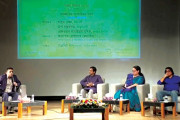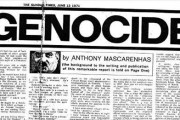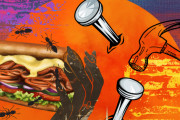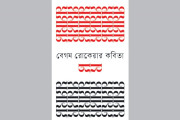।। Ohidul Alam ।।
Inappropriate treatment and disposal of the infectious HCW may pose serious environmental and occupational health risks to those who take care of the patients as well as those who participate in the management of the HCW within and outside the healthcare facilities
The first coronavirus case was identified in December, 2019 in Wuhan city of Hubei province, China. The coronavirus (COVID-19) has already affected 213 countries and territories around the world and two international conveyances. The total number of infected persons and death is 9,064,749 and 470,981, respectively till 22 June, 2020. The major COVID-19 affected countries are the United States, Brazil, Russia, India, United Kingdom, Peru, Spain, Chile, Italy, Iran, Germany, Turkey, Pakistan, Mexico, France, Saudi Arabia, Bangladesh and Canada. It is a very interesting matter that China is out of top 20 COVID-19 affected countries though the disease originated from China.
The first three known COVID-19 cases were confirmed on 8 March 2020 in Bangladesh by the Institute of Epidemiology, Disease Control and Research (IEDCR) in the capital Dhaka. The first COVID-19 cases in Bangladesh were identified about three months after coronavirus outbreak in China. However, the number of rapid increase of COVID-19 infection in Bangladesh has already crossed China’s due to the inappropriate planning and defective implementation of the government plans. The defective implementation of lockdown could not control the spread of COVID-19 infection due to the slow test results and insufficient test number.
The COVID-19 virus is primarily transmitted from an infected person to a non-infected person or healthcare worker through respiratory droplets and contact routes. Droplet transmission occurs when a person is in close contact (within 1 m) with someone who has respiratory symptoms (e.g., coughing or sneezing). The possible major modes of COVID-19 transmission include saliva, surface contact, aerosol and airborne, digestive tract, fecal-oral, sexual transmission, maternal-to-neonate transmission, conjunctival secretions (eyes), asymptomatic carriers and other routes.
The treatment of COVID-19 infected patients generates a large quantity of infectious healthcare waste (HCW) from healthcare facilities which is one kind of regulated medical waste. One of the potential sources of COVID-19 infection to non-infected person is the generated COVID-19 HCW during the healthcare activities. COVID-19 HCW is not the main potential way of virus transmission. However, it would be significant problem if such infectious HCW is not collected separately and then managed properly according to the regulated HCW guidelines.
The main component of COVID-19 HCW is personal protective equipment (PPE) which is discarded after single use. PPE comprises of the gown for covering the body, long foot cover, face mask, face shield, hand gloves, respirator mask and goggles. All these components are for single use, except the goggles and face shield, which may be reused after proper disinfection. The other types of COVID-19 HCW include facial tissue, gauze pieces, oxygen masks, test tubes of nasopharyngeal swabs, saline bags, disposable syringes and needles, etc.
Recently, infectious HCW increased by 600% from 40 tons/day to 240 tons/day during the COVID-19 outbreak in Hubei Province, China. Similarly, a large quantity of infectious HCW is generated from COVID-19 patients treatment in Bangladesh. As a result, there is an increasing concern about how to deal with HCW arising from potentially infectious COVID-19 patients, the staff caring for them and medical laboratories.
HCW usually has to be collected, stored, transported, treated and disposed off without any further infection and pollution risks. Therefore, COVID-19 HCW demands special attention in-house storage, transportation and final disposal. However, the health workers are not well-trained about safely handling infectious waste in Bangladesh as well as most of waste handlers are uneducated or just completed primary level education which is liable for COVID-19 spread.
The COVID-19 virus can remain viable on plastic and stainless-steel for a maximum of 48 h and 72 h, respectively. Its stability on copper and cardboard was not shown to exceed 4 h and 24 h, respectively from the contamination. Healthcare Without Harm (2020) reported that the precise time of coronavirus lasting on PPE is not known yet, however, it can last up to 72 h on hard surfaces like plastic, but less so on porous surfaces. If these materials are reused then a user will be infected by coronavirus. Still there is a view among doctors and researchers about the survival periods of COVID-19 on HCW not disposed off.
With respect to risk reduction associated with microorganisms, the most important objective is to destroy them prior to release of the contaminated material into the environment. Pathogen destruction can be achieved through proper pyrolysis, incineration and non-incineration such as steam-sterilization (autoclaving or microwaving) and chemical disinfection treatments. After treatment, COVID-19 HCW can be sent for final disposal in landfill or recycling.
Inappropriate treatment and disposal of the infectious HCW may pose serious environmental and occupational health risks to those who take care for the patients as well as those who participate in the management of the HCW within and outside the healthcare facilities. HIV and hepatitis virus can survive longer than COVID-19 virus on the surface of discarded materials or wastes. Therefore, it is not important to be worried about the surpassing quantity of infectious HCW generation from treatment of COVID-19 patients.
The sustainable management of increasing amounts of COVID-19 HCW has become a major social and environmental concern because improper management leads to substantial negative environmental impacts as well as health and safety problems. The establishment of rules to effectively manage HCW is a challenging task for the public sectors of Bangladesh. It has raised concerns relating to public health, occupational safety and the environment.
It is recommended that the waste workers should take occupational health and safety precautions to avoid any possible infections by waste streams/equipment. If generated infectious COVID-19 waste is collected separately and kept stored for about 72 h, then there is less risk of COVID-19 virus spread. Finally, COVID-19 HCW can be treated and disposed off as general HCW.
The writer is a Ph.D. scholar in Environmental Engineering, East China University of Science and Technology (ECUST), Shanghai, China. E-mail: ohid776@gmail.com










































































































































































